*NURSING > QUESTIONS & ANSWERS > NSG 6440 APEA QUESTIONS (SOLVED) (All)
NSG 6440 APEA QUESTIONS (SOLVED)
Document Content and Description Below
NSG 6440APEA QUESTIONS.docx APEA QUESTIONS NEUROLOGY The level of consciousness that refers to the ability of the patient to respond fully and appropriately to stimuli is known as: alertness ... When assessing the patient’s sense of position, instruct the patient to first stand with his feet together and eyes open, then instruct him to close both eye for 30- 60 seconds. If he loses his balance with his eyes closed, this is: suggestive of ataxia related to dorsal column disease When comparing two sides of the body for symmetric sensation a symmetrical distal sensory loss would be suggestive of: polyneuropathy A female patient complains of weakness in her arm when combing her hair. This finding could be suggestive of which type of weakness pattern? Proximal Having the patient shrug his shoulders and elicit neck movements would be testing cranial nerve: XI It is imperative to assess for suicidality and bipolar disorder in patients suspected of experiencing: depression Which one of the following procedures should NOT be performed in a comatose patient? Dilate the pupils With the adult patient laying supine, the nurse practitioner flexes that patient’s leg at both the hip and the knee and the straightens the knee. Pain and increased resistance to extending the knee is noted. This is a positive: Kernig’s sign The part of the brain that controls most functions in the body and is responsible for breathing, heart rate, and articulate speech is the: brainstem The patient has his eyes closed and an area on his right leg is briefly touched by the nurse practitioner. The patient is instructed to open his eyes and point to the area that was touched. This is an example of the discriminative sensation known as: point localization What geriatric condition is characterized by normal alertness but progressive global deterioration of cognition in multiple domains? Alzheimer’s disease Which one of the following assesses pain, temperature, and sensation using the distal and proximal areas testing pattern? Test the sensation in the thumbs and little fingers An 8-month-old with a significant head lag would suggest the need for: a neurological evaluation A form of aphasia in which the speech is confluent, slow, with few words and laborious effort and inflection and articulation are impaired but words are meaningful, is termed: Broca’s aphasia With the patient lying supine, the nurse practitioner places her hands behind the patient’s head while flexing the neck forward until his chin touches his chest. Neck stiffness with resistance to flexion is noted. This is a positive: nuchal rigidity sign When assessing coordination of muscles movement, four areas of the nervous system function in a integrate way. These areas include the motor, cerebellar, the vestibular, and the sensory systems. Which system coordinates a steady posture? Cerebellar system The level of consciousness that refers to the patient that remains unarousable with eyes closed without evidence of response to inner need or external stimuli is said to be in: a comatose state Hypesthesia refers to: decreased sensitivity to touch A female patient complaint of weakness in both arms when transferring the wet clothes from the washer and placing them in the dryer. This finding could be suggestive of which type of weakness pattern? Symmetric A 80-year-old male visits the nurse practitioner for an annual well exam. History reveals two falls in the prior 12 months and difficulty with balance. The next step the nurse practitioner should take is: obtain cognitive and functional assessment Fasciculations in atrophic muscles suggests: a lower motor neuron disease A tension headache presents with pain in the: frontotemporal region of the head An example of tandem walking is having the patient: walk heel-to-toe By placing the patient in the supine position, the nurse practitioner raises the patient’s relaxed and straightened leg while flexing the leg at the hip, and the dorsiflexes the foot. This maneuver is known as: the straight-leg raise A discriminative sensation that described that ability to identify an object by feeling it is: stereognosis The best method of detecting cognitive impairment or intellectual disability at an early age is by: assessment of the achievement of development milestones Symptoms of a subdural hematoma include: noticeable bleeding between the dura and the cerebrum on x-ray The part of the brain tissue that rims the surfaces of the cerebral hemispheres, forming the cerebral cortex is known as the: gray matter The patient experiences a sudden loss of consciousness with falling without movements and injury may occur. This type of seizure is consistent with: a myoclonic seizure A patient is noted as lying supine with the jaws clenched and the neck extended with the arms adducted and stiffly extended at the elbows. His forearms are pronated, wrists and fingers flexed. The legs are extended at the knees and the feet are plantar flexed. This position is consistent with: decerebrate rigidity When assessing abdominal cutaneous reflexes, the nurse practitioner strokes the lower abdomen, the localized twitch is absent. This finding could be suggestive of a pathologic lesion in which segmented level of the spine? Thoracic 10, 11, and 12 An older adult presenting with signs of undernourishment, slowed motor performance, and loss of muscle mass or weakness suggests: frailty Symmetric weakness of the proximal muscles of the legs suggests a: myopathy Aphasia refers to: the inability to produce or understand language The part of the peripheral nervous system that regulates muscle movement and response to the sensations of pain and touch is the: somatic nervous system Assessment findings in an infant with increased intracranial pressure would include: drowsiness What is an example of a disease or condition that appears in a dermatomal pattern? Shingles Common physical findings in a young child with cerebral palsy include which one of the following? Presence of crossed or touching knees The part of the peripheral nervous system that controls involuntary actions is known as the: autonomic nervous system Ptosis of the left eye would be suggestive of damage to which cranial nerve? Cranial nerve III (CN III) A patient who is being evaluated for frequent headaches, mentions that the headache worsens with coughing, sneezing, or when changing positions. Increasing pain with these maneuvers may be suggestive of: a brain tumor An infant presents with an inappropriately increasing head circumference and hydrocephalus confirmed by CT scan. In addition to these findings, which one of the following would also be consistent with hydrocephalus? Tense, bulging fontanels A 40-year-old male presents with complaints of headaches. History revels headaches that occurred daily for about 4-6 weeks. He had relief for 6 months but now they are recurring. These are most likely: cluster headaches Assessing the neurological status of a child with a ventriculoperitoneal shunt should include: use of the Glasgow coma scale During this type of seizure activity, the patient appears confused. Automatisms include automatic motor behaviors such as chewing, smacking the lips, walking about, and unbuttoning clothes. This type of seizure activity is referred to as a: focal seizure with impairment of consciousness Which of the following neurological assessment findings indicate the need for further evaluations? Weak and ineffective sucking movements To evaluate a patient’s response to light touch sensation, the nurse practitioner would as the patient to identify: a touch on the skin in response to touching the skin with a cotton wisp A patient is instructed to stand, close both eyes, and extend both arms forward with the palms facing upward for 20-30 seconds. If the forearm drifts downward, this would indicate: corticospinal tract lesion A term used to describe an increase in the muscular bulk with diminished strength is: pseudohypertrophy Most peripheral nerves contain afferent and efferent fibers. The term efferent refers to: motor nerve fibers The Glasgow coma scale assesses: motor response When observing the thenar atrophy of hands, a typical observation is: furrowing in the spaces between the metacarpals When evaluating a patient for weakness of the upper extremities, bilateral distal weakness is noted. This finding could be suggestive of: polyneuropathy Disorders of speech fall into three groups that affect all of the following except the: written language During this type of seizure activity, the patient loses consciousness suddenly, sometimes with a cry, and the body stiffens into tonic extensor rigidity. Breathing stops, and the person becomes cyanotic. A clonic phase of rhythmic muscular contraction follows. This type of seizure activity is referred to as a: grand mal seizure Persistent blinking after glabellar tap and difficulty walking heel-to-toe are common in: Parkinson’s disease An indication that there is a malfunction of a ventriculoperitoneal (VP) shunt in an older child would be the presence of a: headache upon awakening When assessing anal reflexes, the nurse practitioner strokes the four quadrants of the anus with a cotton swab. A loss of anal reflex is noted. This finding could be suggestive of a pathologic lesion in which segmented level of the spine? Sacral 2, 3, and 4 The part of the brain that maintains homeostasis is the: hypothalamus Symptoms indicative of Shaken Baby Syndrome are related to: uncontrollable cerebral edema and hypoxia On examination of the adult patient, symptoms of flexed posture, tremor, rigidity, and shuffling gait are observed. These findings are consistent with: Parkinson’s disease The level of consciousness that refers to the patient that arouses from sleep only after painful stimuli is known as: stupor When upper motor neuron systems are damaged below the crossover of its tracts in the medulla, motor impairment develops on the same side. This term is: ipsilateral A form of aphasia where articulation is good, but sentences lack meaning is referred to as: Wernicke’s aphasia When upper motor neuron systems are damaged above the crossover tracts in the medulla, motor impairment develops on the opposite side. This term is: contralateral A sudden brief lapse on consciousness with momentary blinking, staring, or movements of the lips and hands but no falling is consistent with: an absent seizure A patient is asked to visually follow a finger through the cardinal fields of gaze. Which cranial nerves are being assessed? III, IV, VI When a patient complains of severe headache that have worsened over the last few weeks, but she has no other symptoms, a most likely diagnosis would be: a tumor A form of aphasia in which the person has word-finding difficulties for speaking and writing is known as: anomic aphasia A neurologic assessment to evaluate neurologic input to the cerebellum is: Romberg test Symmetric weakness of the distal muscles of the legs suggests a: polyneuropathy A patient presents with a history of a temperature of 102F, headache, and pink papules on the upper chest several hours ago. Petechiae and ecchymosis are noted on the trunk. These skin lesions may be indicative of: meningococcemia When assessing the cranial nerves, the nurse practitioner observes that the soft palate does not rise when the patient is instructed to say “ah”. This finding could [Show More]
Last updated: 1 year ago
Preview 1 out of 81 pages

Reviews( 0 )
Document information
Connected school, study & course
About the document
Uploaded On
Aug 31, 2021
Number of pages
81
Written in
Additional information
This document has been written for:
Uploaded
Aug 31, 2021
Downloads
0
Views
83


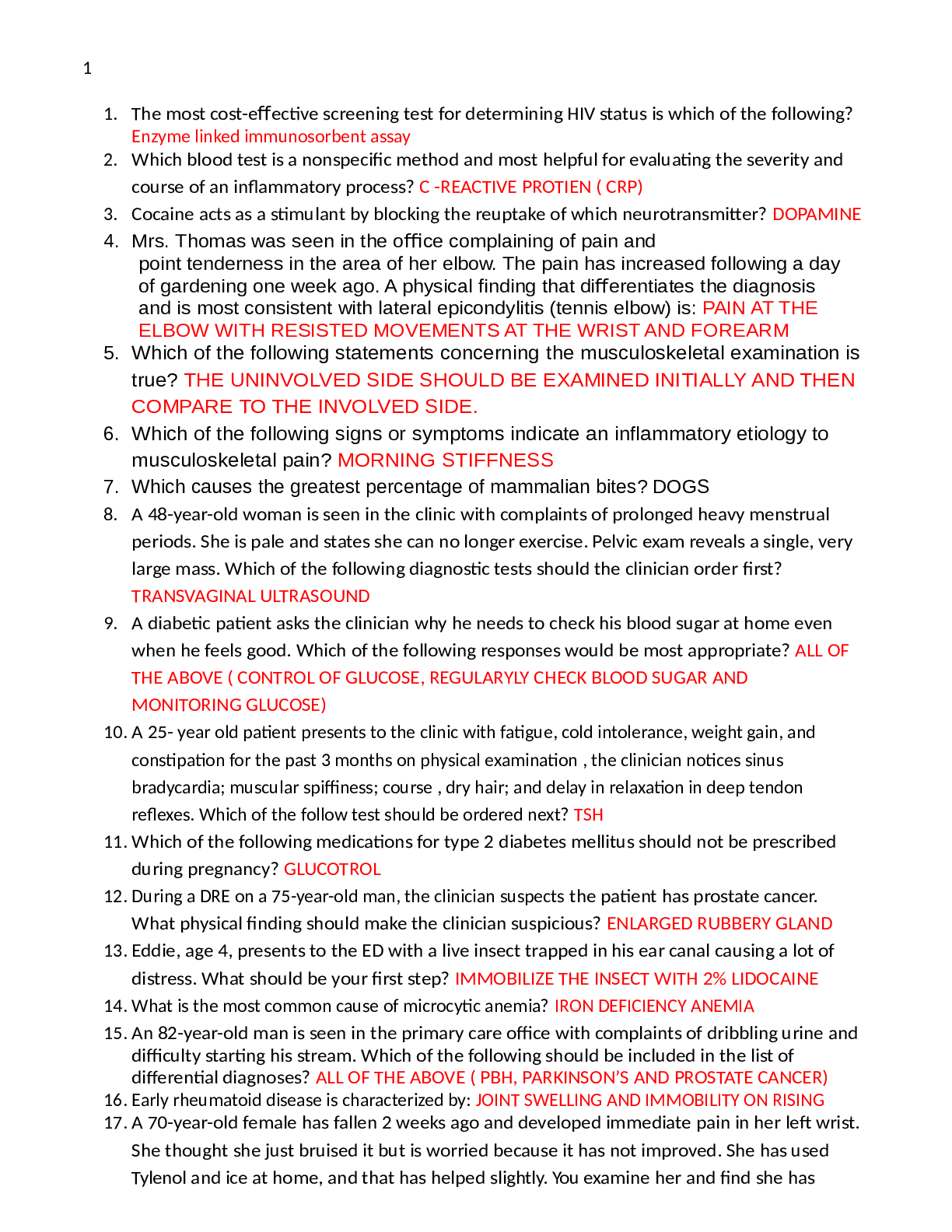
.png)



.png)
.png)

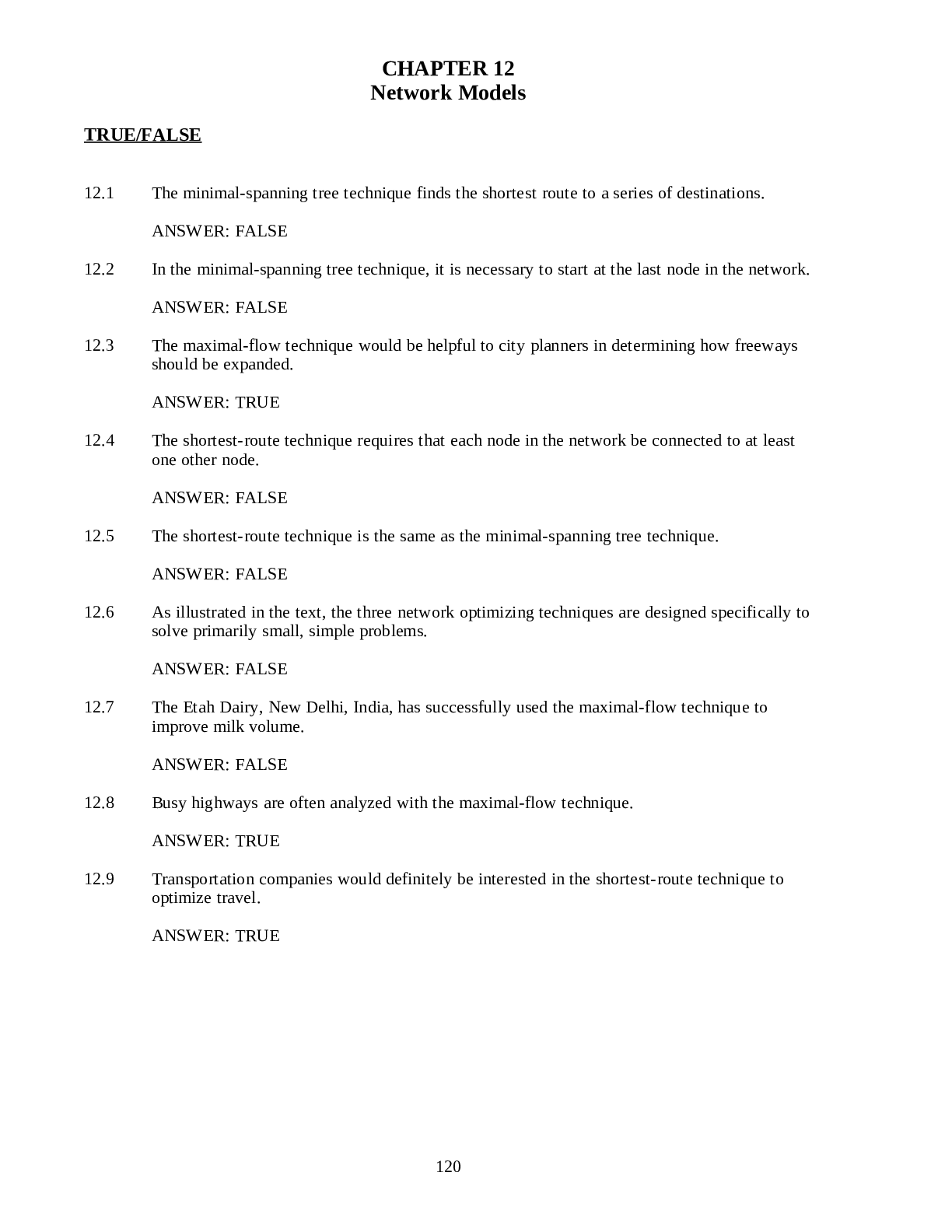


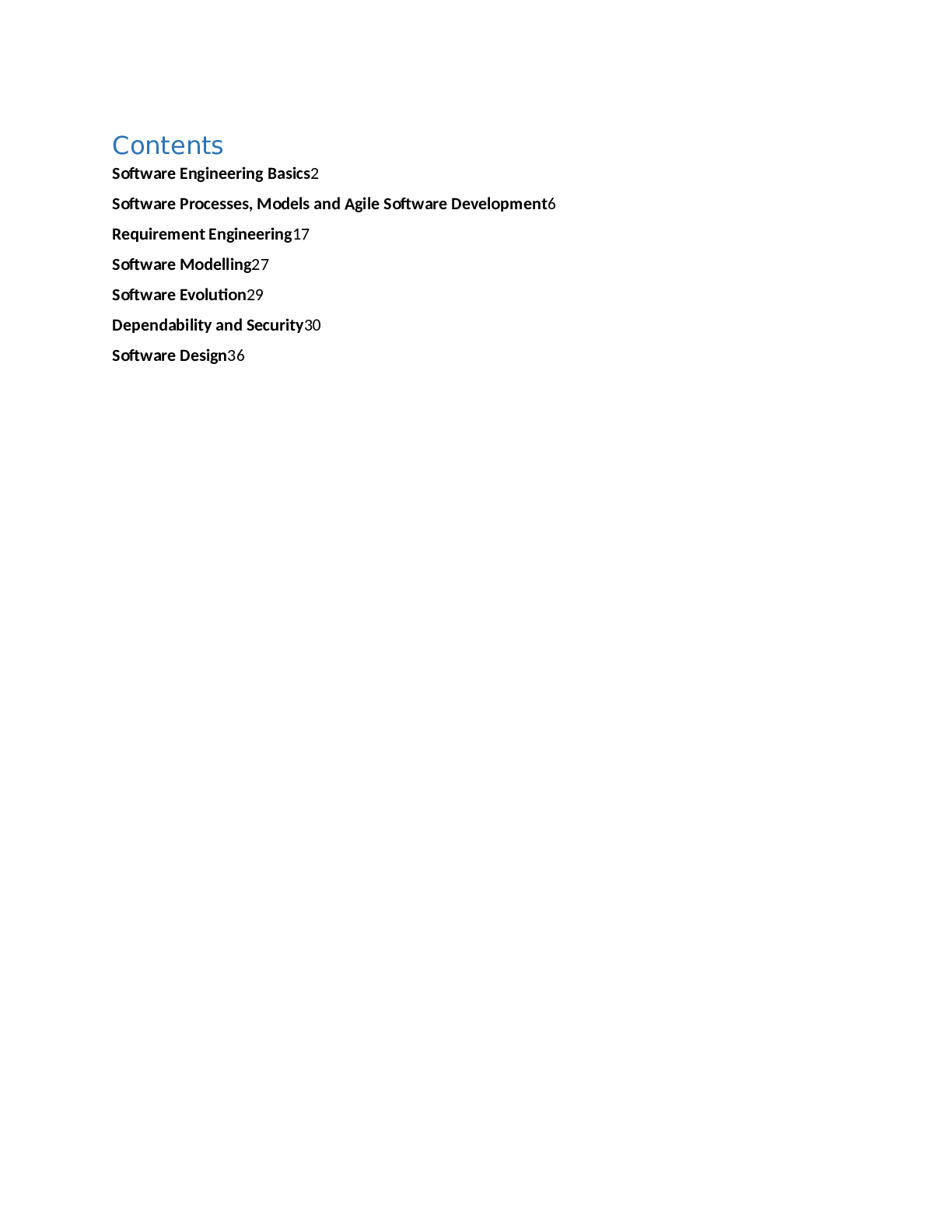

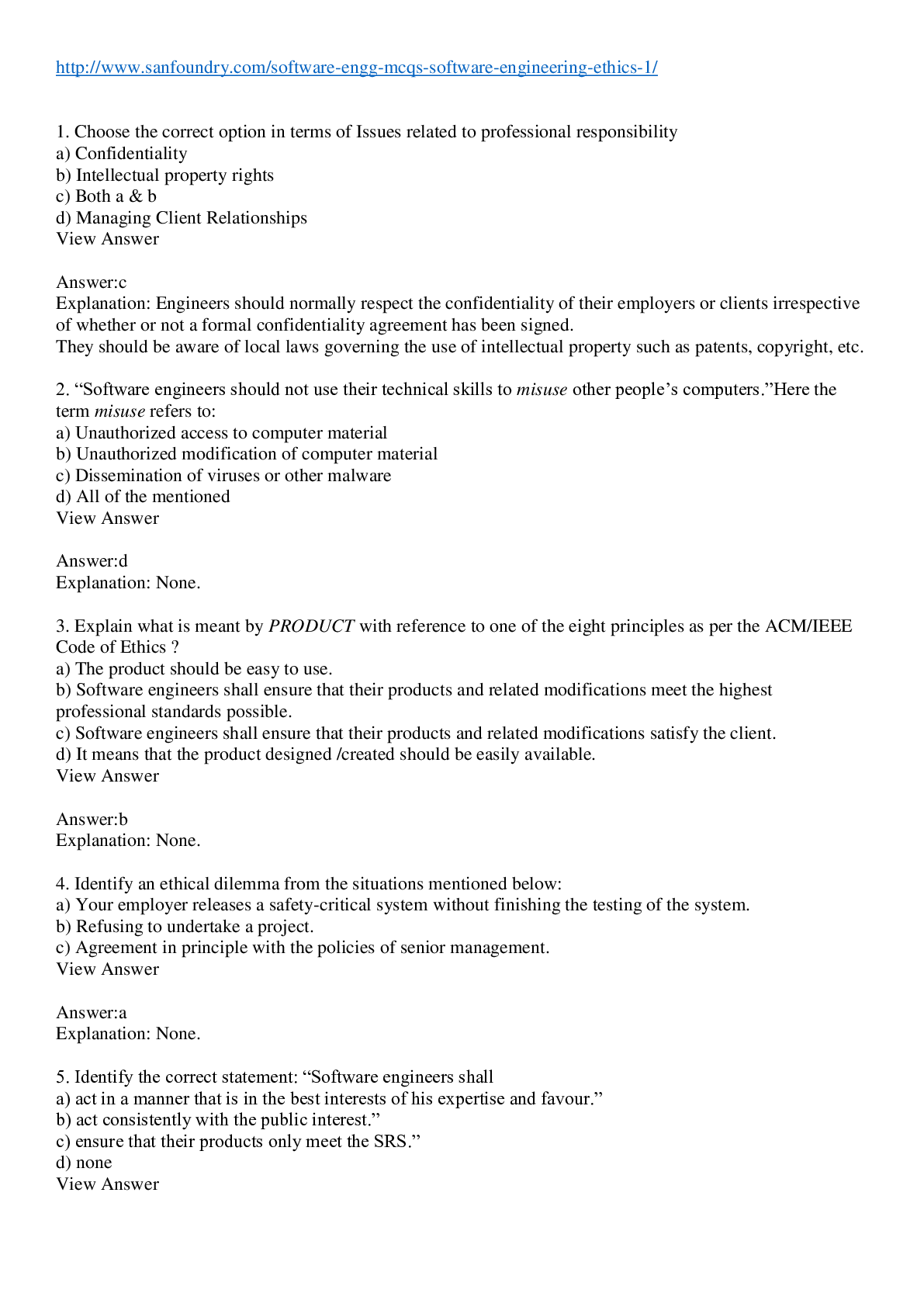
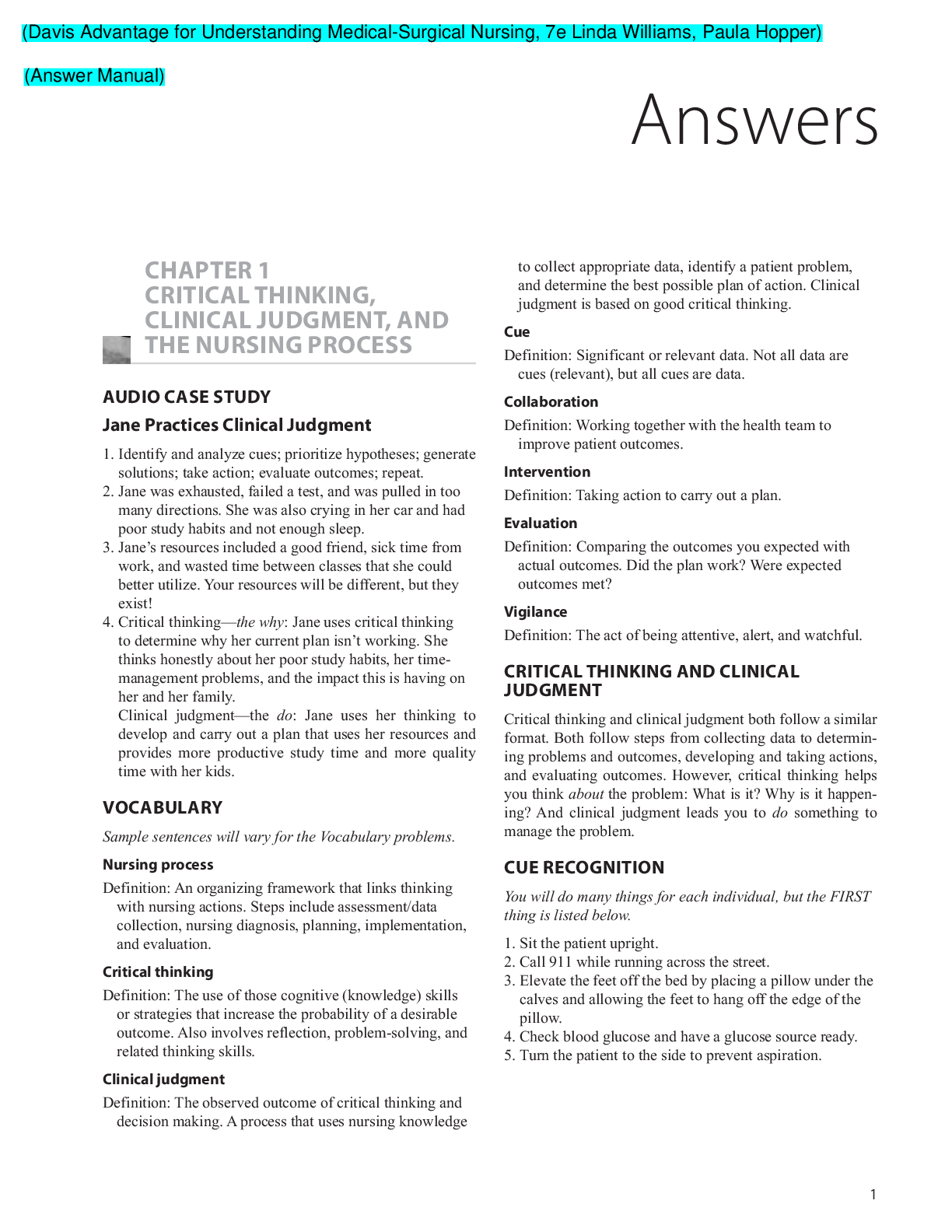

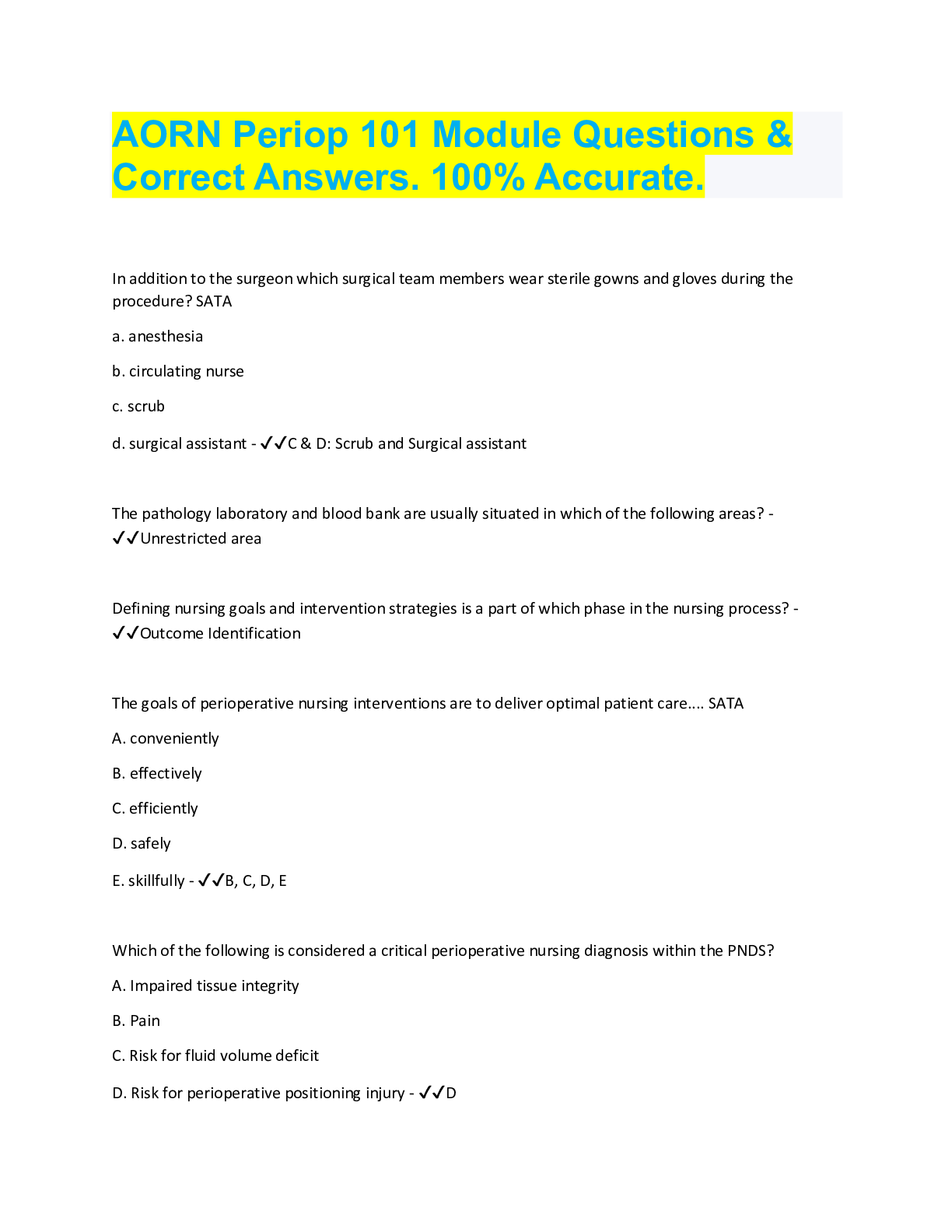






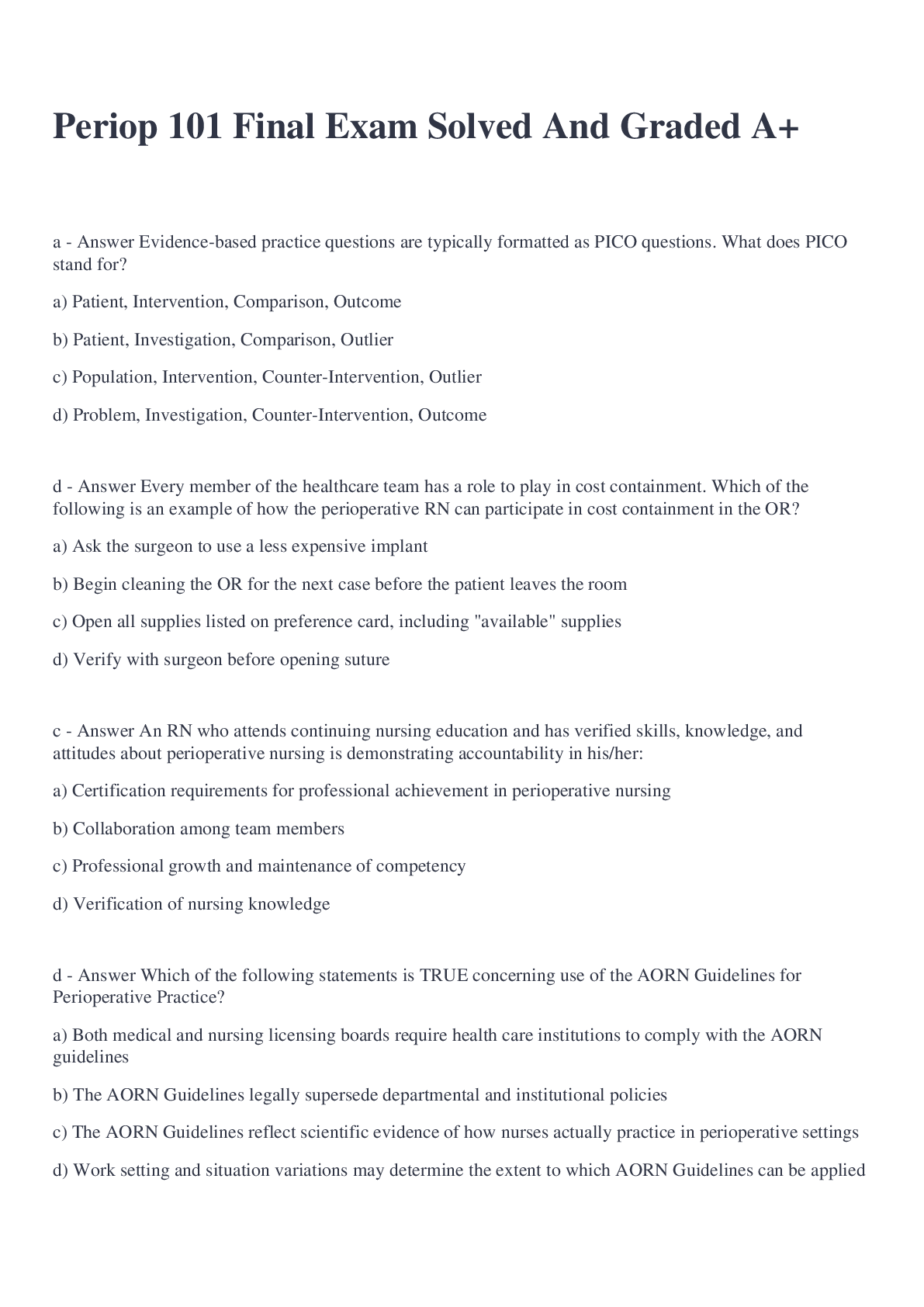

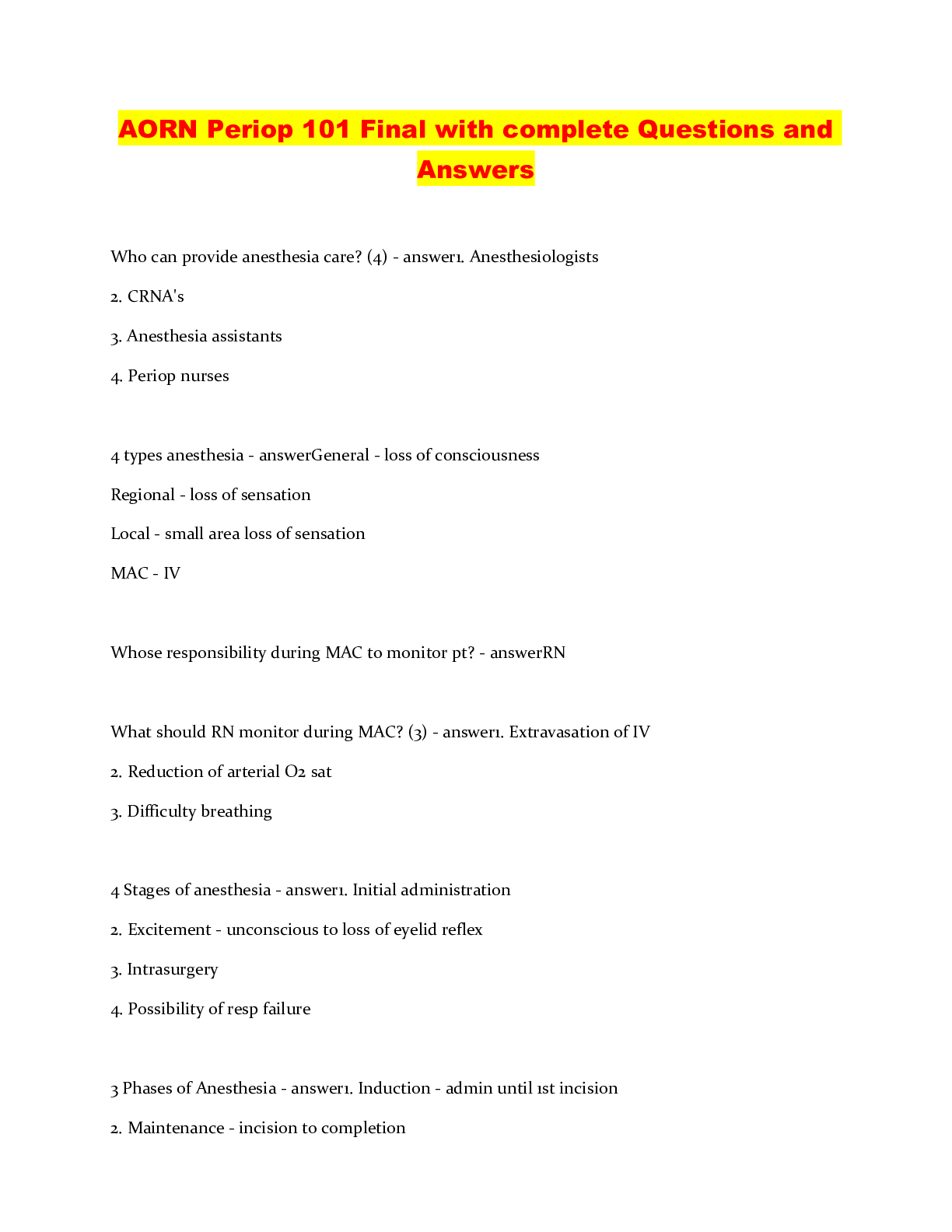
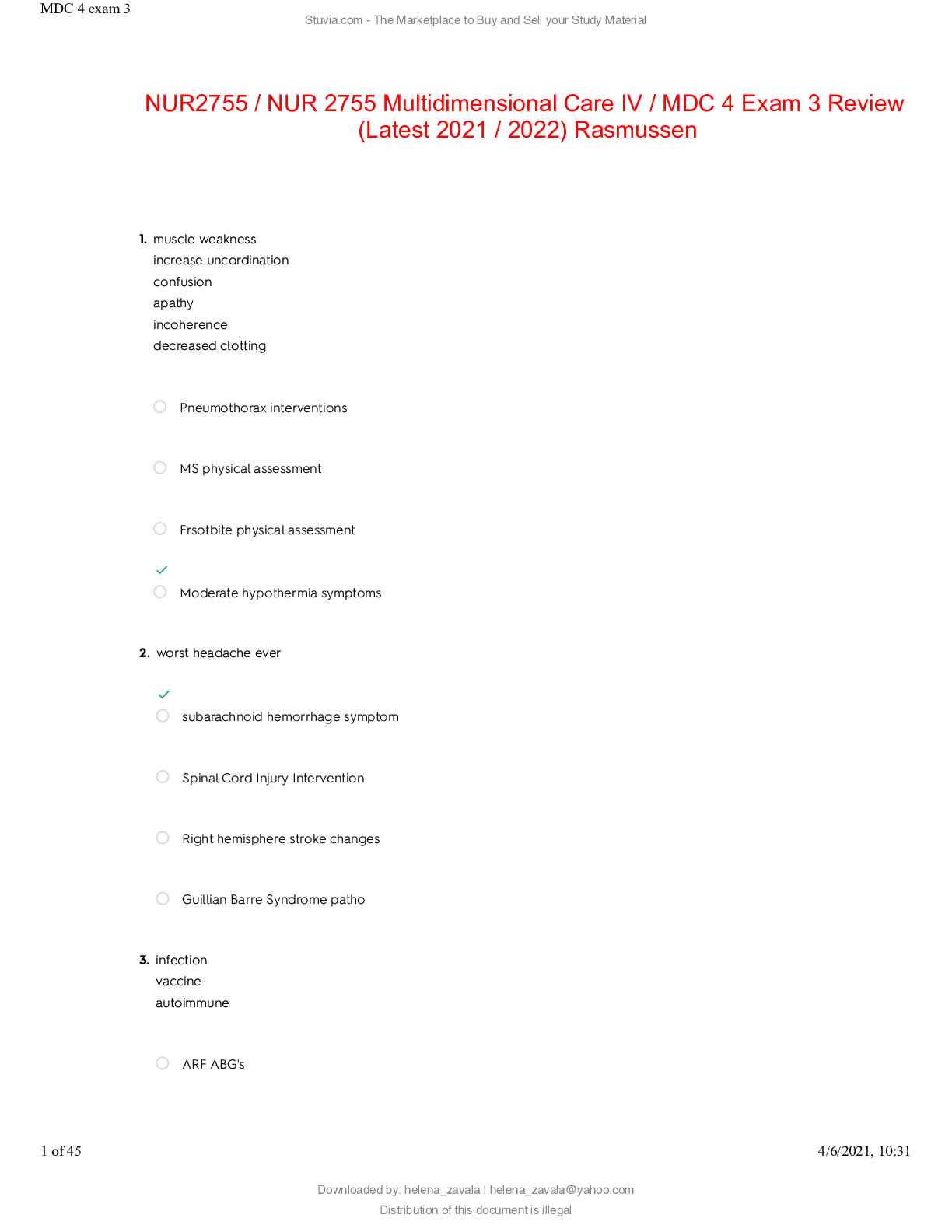


.png)

